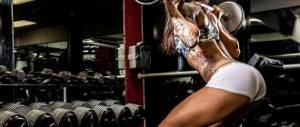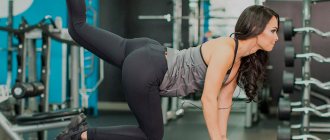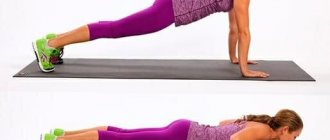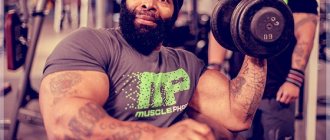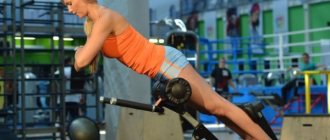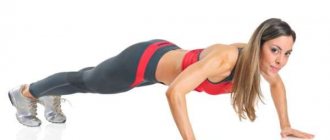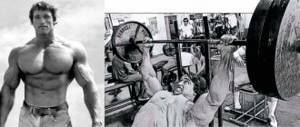Taking up bodybuilding classes, guys dream of transforming their muscles beyond recognition. Numerous examples of already established professional bodybuilders tell them the direction of movement.
The picture is tempting and promising, but at first no one thinks about how much time it takes to achieve their goals. Observing the end result of experienced bodybuilders, it is difficult for the average person to evaluate the efforts invested and, of course, the time spent on them. But it is time that determines success in a particular business, and bodybuilding is no exception to the rule.
It’s one thing when efforts are rewarded, albeit after some time, and quite another when these same efforts go “nowhere.” Even the owner of unearthly patience, sooner or later, without seeing any clear results, will give up his unpromising occupation and he will be right. But only in his understanding of what is happening to him.
Water
Vital during training, because dry mouth will not bring you anything good. On the contrary, it can only cause harm (dizziness, nausea), don’t be afraid, water is not high in calories, you can drink it as much as you like (of course, if it’s plain water, not Coca Cola, etc., otherwise it will already be high in calories) + water during training , enveloping joints and penetrating soft tissues, protects them from injury.
For those who have amino acids in soluble (powdered) form, they can be mixed together with water and absorbed during exercise for maximum effectiveness. (not necessary)
Conclusion: take at least 1-1.5 liters of plain still water with you.
It’s good to have it with you during training and why we’ve already discussed it. Now I present to you the preparation of a training complex, day by day and week by week.
I identified 4 training programs that I based on:
- For beginners (3-4 or 2 workouts per week)
- for intermediate level (split 3 days a week)
- for intermediate level and more experienced (split both 3 and 5 days a week)
- for experienced athletes (split 5 days a week)
Principles of nutrition
In addition to physical activity, proper nutrition plays a huge role in losing weight. By following simple nutritional rules, you can increase the speed and effectiveness of the result by 70%. An unbalanced diet, full of calories and sugar, will hide beautiful forms under a layer of fat.
Basic principles of proper nutrition for weight loss:
- We remove sweets and flour products from the diet;
- We consume complex carbohydrates in the first half of the day;
- Do not exclude fats, add 1 - 2 tablespoons of unrefined oil (olive, flaxseed, pumpkin, sesame);
- Fruits are allowed until 16.00;
- Proteins and vegetables are allowed for dinner;
- We consume a lot of water, up to 2 liters per day;
- We don’t overeat at night; dinner is 3–4 hours before bedtime.
Example of a daily diet
- Breakfast: oatmeal with dried fruits, tea or coffee;
- Snack: 20 g of nuts, apple or banana;
- Lunch: rice with steamed vegetables;
- Afternoon snack: low-fat cottage cheese, kefir;
- Dinner: baked chicken fillet, vegetable salad with olive oil.
This is only an approximate weight loss nutrition program for girls; at the link you will find several menu options.
For beginners (3-4 or 2 workouts per week)
Once you start bodybuilding using this training program in the gym, stick to it for at least 6 months. After which you can move on to the next training program.
The essence of this training program is as follows: we break the body into two workouts using a split. Split - translated from English. split. This means that we will split muscle groups on different days. Namely:
This is what a training split looks like:
- Day 1 – Legs, back.
- Day 2 – Chest, shoulders, arms.
After each such workout in the gym, we rest the next day. If you are not young or have a very stressful job, you can safely take two days of rest instead of one.
Therefore, in a week we will have either 3-4 or 2 workouts in the gym.
It will look something like this:
- Day 1. Monday - Legs, back
- Day 2. Tuesday - Rest
- Day 3. Wednesday - Chest, shoulders, arms
- Day 4. Thursday - Rest
- Day 5. Friday – Legs, back
- Day 6. Saturday - rest
- Day 7. Sunday - Chest, shoulders, arms
Etc. Did you get the point? For those who have a nervous job, constant stressful situations, poor nutrition, if you are already aged, etc. and so on. feel free to add two days of rest instead of one.
It will look like this:
- Day 1. Monday - Legs, back
- Day 2. Tuesday – Rest
- Day 3. Wednesday - rest
- Day 4. Thursday - Chest, shoulders, arms
- Etc.
Program and selection of exercises:
Legs-back
- Seated leg extension 4xMAX (to warm up the knee joints)
- Squats 1-2x10-15 (warm-up) + 3x8-12 (working sets)
- Leg press 1-2x8-10 (warm-up) + 3x8-12 (working)
- Pull-ups (if you can) or chin pull-downs 4x8-12
- Bent-over barbell row 4X8-12
Chest-shoulders-arms
- Bench press on an incline bench 1-2x10-15 (warm-up) + 3x8-12 (working)
- Incline Dumbbell Press 4x8-12
- Barbell press, standing from the chest 1-2x10-15 (warm-up) + 3x8-12 (working)
- Lifting the barbell for biceps 1x10-15 (warm-up) + 4x8-12 (working)
- Bars 4x6-12
About load progression
The rate of muscle growth depends on the load - that's a fact. However, it is a mistake to believe that for hypertrophy you need to constantly work at the limit of your capabilities. Indeed, increasing working weight is very important, but this should not be taken too literally.
For clarity, consider the following example. A beginner comes to the gym with the goal of becoming a bodybuilder and in the future taking prizes in competitions. The goal is good and achievable, but you need to approach the issue of implementing your plan wisely.
This person has studied the theory well and knows where to start. For the first two months he follows the basic program. The body gradually becomes toned, the muscles develop, and perhaps during this period there will be a slight increase in muscle mass (2-4 kg). Over time, the athlete changes the training program; in addition to the basics, he performs isolated exercises for different muscle groups. A person knows that muscles grow under heavy workload, so each training session increases the working weights. At first it really gives a good result, but at some point progress slows down or stops altogether. The athlete does not give up and adds more weight, even if it is ahead of his own training plan. The muscles are constantly stressed, the person feels overwhelmed, and the result is still far from the desired one. What do most amateurs do in this case? Either they increase the weight even more, or use sports pharmacology. The result depends on how persistently a person continues to exercise, but most often this ends in the development of overtraining syndrome.
Unfortunately, this is a real example. In every gym, at least 30% of those training without a trainer sooner or later come to this result, and all because the person did not understand such an issue as periodization of loads in bodybuilding.
For intermediate level (Split 3 days a week)
First of all, decide whether the first training program continues to work or not?
If you continue to gain strength and muscle mass, then nothing needs to be changed. This rule applies to any training scheme. As long as the set of physical exercises in the gym works, do not change it. If progress is not visible, move to the next level.
The essence of this training program is as follows: we pump the whole body in three workouts.
We train the back together with the deltoids, and the chest with the arms.
We have specially allocated a separate day for legs (this will allow for better training of the largest muscle group). We adjust the training days (Monday, Wednesday, Friday or Tuesday, Thursday, Saturday) to suit ourselves.
Stick to this program as long as you make progress, it is a very effective training system that will give you guaranteed results!
It will look something like this:
- Day 1. Monday - Legs
- Day 2. Tuesday - Rest
- Day 3. Wednesday – Back-Deltas
- Day 4. Thursday - Rest
- Day 5. Friday – Chest, Arms
- Day 6-7. Saturday-Sunday – rest
This is what a training split looks like:
- Legs
- Delta's back
- Chest Hands
Program and selection of exercises:
Legs
- Squats 4x8-10
- Bench leg press 3x8-10
- Seated leg extension 3xMAX (finishing exercise)
- Calf raises, standing 3x8-10
Back deltoids
- Pull-ups or block rows to the chest 4x6-12
- Bent-over barbell row 4x6-12
- Horizontal thrust 3x6-12
- Barbell press, standing behind the head 3x6-12
- Pulling (barbell row to the chin, medium grip) 3x6-12
- Abduction of arms with dumbbells to the side 3x6-12
Chest-arms
- Bench press lying on an incline bench 4x6-10
- Incline Dumbbell Press 3x6-10
- Barbell curl for biceps 4x6-12
- Bars 4x6-12
- French bench press, lying 3x6-10
Training strategy and rules
Dr. Luber’s training strategy (and not so much a strategy, but a kind of life rules) for beginners is simple, like gyms of that time, and fits into several points:
- You come to the gym to train, not to have a good time.
- The best workouts are workouts with a partner.
- In the first 2-3 years, don’t think about the relief - grow in mass.
- Grow mass with basic exercises with barbells and dumbbells.
- The more you lift, the more you grow. The dependence is direct.
- To lift more, have time to recover, train every other day.
- Work your entire body in one workout using 1-2 exercises for a large muscle group.
- No pain – no gain.
- Eat more than before you started training.
- You don't need steroids for the first 3-4 years. (Zozhnik’s note – if you think about your health, steroids are not needed at all).
For intermediate level and more experienced (Split 3 or 5 days a week is suitable)
The essence of this training program is as follows: we train one muscle group during training, the intensity of the training increases, because we have more strength, and we can fully work on a specific target muscle more thoroughly.
This is what a training split looks like:
- Mon. Breast
- Tue Back
- Wed. Legs
- Thurs. Shoulders
- Fri. Hands
Program and selection of exercises
Mon. Breast
- Bench press on an incline bench (30 degrees no more) 4x6-12 reps
- Incline dumbbell press (30 degrees) 4x6-12 reps
- Bench press on a horizontal bench 4x6-12 reps
Tue Back
- Pull-ups or pull-downs (for those who cannot do pull-ups) 4x6-12 reps
- Bent-over barbell rows 4x6-12 reps
- Horizontal block row 4x6-12 reps
- Lever row 4x6-12 reps
Wed. Legs
- Squats with a barbell on the shoulders 4x6-12
- Leg press 4x6-12
- Seated leg extension 4x6-12
- Lying leg curl 4x6-12
- Calves, standing in the simulator 4x15-20
- Calves sitting in the 4x15-20 machine
Thurs. Shoulders
- Barbell row to the chin with a medium grip (broach) 4x6-12
- Barbell press, standing from the chest 4x6-12
- Dumbbell raises to the side (swings) 4x10-15
- Swings, standing (3 approaches of a drop set, first heavy, medium, light all for 6-15 repetitions, rest 20 seconds)
Drop sets are sets where you drop weight. For example, take 12 kg for 6-15 reps, immediately take 10 kg for 6-15 reps, immediately do 8 kg for 6-15 reps, and do 3 sets of these with a rest of 20 seconds.
Fri. Hands
- Barbell curl for biceps 4x6-12
- Bars (emphasis on triceps) 4x6-12
- Hammers with dumbbells 4x6-12
- Close grip barbell press 4x6-12
How to create a weight loss program correctly
Let's take circuit training as an example for weight loss. First of all, it is necessary to create a set of exercises, starting with large muscles, starting with the legs, ending with smaller ones - the muscles of the arms and abs. One exercise per muscle group is enough. If you are working on the hamstrings, be sure to include the antagonist muscle, the opposite muscle - the quadriceps. And also, when working on your back, include your chest in your work. Train your lower back and abs in one workout. By constructing the lesson in this way, the muscles will develop evenly, maintaining balance in the muscle corset. Because with a strong lower back, but weak abs, the correct position of the spine is disrupted. The lower back bends, and the stomach seems to fall forward, since the abdominal muscles are not toned. Features of cardio for girls
For the female body, as well as for the male body, it is important to reduce adipose tissue, not muscle, because the loss of muscle protein due to improper cardio will not make the body beautiful. The fat will remain in place. To burn only fatty tissue, you need to maintain a heart rate zone of 120 – 160 beats per minute. The duration of cardio training does not exceed one hour. Universal program for weight loss in the gym
Everyone’s body is completely different and this must be taken into account when choosing a complex. If there are no injuries or any disorders of the musculoskeletal system, you can safely start training. Initially, the muscles should become toned and the correct technique should be worked out. Exercise equipment
Warm-up
Warming up is an essential part of strength training. It eliminates the possibility of injuring muscles and ligaments. Warm muscles are the basis for an effective workout. It can last from 10 to 15 minutes, this time will be quite enough. To warm up, you can do a brisk walk on an incline on a treadmill, a light jog, or choose any cardio machine.
Basic exercises on leg trainers
Seated leg extension in the simulator
- Sitting in the block simulator, we install the back of the simulator and place our legs under the bolster;
- Select the required weight to perform 25 repetitions;
- Exhale: we straighten our knees at the expense of the quadriceps, without straightening them completely, without overloading the knee joint;
- Inhale: slowly lower your legs to the starting position. We perform 3 approaches.
Lying leg curls
- Lying on your stomach, place your feet under the cushion;
- We hold on to the handle, keep our lower back pressed;
- Exhale: bend your knees, bring the roller to your buttocks using the hamstrings, without engaging your lower back;
- Inhale: smoothly lower your feet, without jerking. We perform 20 – 25 times in 3 approaches.
Leg press
- We place our feet on the platform of the press machine, with our toes slightly turned to the sides;
- Inhale: remove the clamps, pressing your lower back tightly, smoothly lower the platform, bending your knees, without lifting your tailbone. We bring the angle at the knees to 90 degrees;
- Exhale: squeeze the platform using the force of your hips and buttocks, without straightening your knees completely. Repeat up to 25 times. Perform 3 approaches.
Hip abduction in block back
- We install the roller above the heel, hold on to the handle, holding the body in a stationary position. The supporting leg is slightly bent at the knee;
- Exhale: move the hip back, lifting it up using the thigh biceps and gluteal muscles. The body remains without deflection in the lower back;
- Inhale: slowly lower the foot to the level of the supporting foot. We perform 3 approaches of 20–25 times.
Seated hip abduction
- Sitting in the hip extension machine, place your feet and knees with your lower back pressed against the back of the machine;
- Exhale: move the hips to the sides using the abductor muscles. We perform without jerking;
- Inhale: bring your legs back to the starting position. We perform 25 times in 3 approaches.
Seated hip adduction
- We install the simulator in the abducted position of the legs and secure the stretch. In this case, the muscles should not be very stretched, there should be no pain;
- Exhale: bring the knees towards each other due to the adductor muscles of the thigh;
- Inhale: smoothly release the tension and return to the starting position. Repeat 25 times for 3 sets.
Exercises for the torso
Pull-down of the upper block behind the head
- We place our hands on the crossbar of the upper block with a wide grip;
- Exhale: perform head pulls, bring your shoulder blades together, feeling the tension in your back muscles;
- Inhale: smoothly, without jerking, raise your arms to the starting position. Perform 20–25 times, 3 approaches.
Butterfly (bringing arms together in a block simulator)
- Sitting on the simulator, place the handles on the sides at shoulder level. Elbows slightly bent, looking back. The chest is open;
- Exhale: we bring the handles together due to the efforts of the pectoral muscles, keeping the sternum rounded;
- Inhale: smoothly move your arms to the sides to the starting position. Perform 3 sets of 20 – 25 times.
Seated dumbbell press
- Sitting on a bench, hold dumbbells above your shoulders, elbows pointing down;
- Exhale: press the dumbbells upward from the chin;
- Inhale: slowly return down.
Triceps extension
- Standing, legs firmly hip-width apart. We hold the handle of the upper block of the crossover with a narrow grip. Elbows pressed to the body, forearm parallel to the floor;
- Exhale: extend the elbows using the triceps, the handle lowers to the hips;
- Inhale: slowly return to the starting position.
Dumbbell biceps curl
- Standing, feet hip-width apart, dumbbells in hands, elbows pressed to the body;
- Exhale: bend your elbows using your biceps, raise the dumbbells to your shoulders without lifting your elbows from your body. The brushes unfold at the top;
- Inhale: lower the dumbbells to your hips.
Exercises to burn fat in the abdomen and sides
Lifting the body
- Lying on the floor, knees bent, arms along the body;
- Exhale: twist using the abdominal muscles, raise your round back to your knees;
- Inhale: gradually lay your round back on the floor. Perform 30 times.
Leg raise
- Lying on the floor, hands under the buttocks, legs straight;
- Exhale: raise your legs up without lifting your lower back;
- Inhale: lower your legs to the floor, holding your lower back with your abdominal muscles. Repeat 30 times.
Side crunches
- Lying on your back, hands behind your head, knees bent, shoulder blades off the floor;
- Exhale: twisting diagonally due to the oblique abdominal muscles, stretch the elbow to the opposite knee;
- Inhale: we return to the center, legs overhang, shoulder blades torn off the floor;
- Exhale: twist in the other direction, the elbow of the other hand reaches towards the opposite knee;
- Inhale: return to center. Repeat 30 - 40 times.
Explanations for all training programs
- We use smart 2, 3, 5-day splits that do not cause conflicts in the recovery process.
- We use macro-overloading (gradually increasing the weights at each workout and working in the planned number of repetitions without breaking the schedule - we do not take heavier weights than planned).
- We keep a training diary, thanks to which we use both methods of load progression (1st method of repetition, 2nd method of increasing weights).
- We use basic exercises (these are exercises that involve several muscles or muscle groups; in short, these are heavy exercises that are performed with free weights). Why? The more muscles involved in the work, the better for the overall development of muscle mass.
- We use the golden mean, namely 3-4 working approaches, after 2 warm-up approaches (these approaches include a warm-up + a leading approach, where the warm-up is an empty bar, then add weight (50-60% of the working weight) in the range of 12-15 repetitions. Then add more weight and do a lead-in approach (already 70-80% of the working set) for 8-10 reps. And only then perform working approaches (100%).
- Each exercise performs 6-12 repetitions. The only exception is the calf muscles (shin) where we perform 15-20 repetitions. Why? The fact is that muscle failure should occur within 10-30 seconds. During this time interval you will have time to perform no more than 6-12 repetitions. But in the case of the calf muscles (lower leg), because... there the amplitude is very short, then where we managed to do 6-12 repetitions during this time, here we will have time to do 15-20 repetitions during this time. That's the whole secret to increasing the number of repetitions for the lower leg.
- If we use FAILURE (that is, the last repetition is a failure), you are no longer able to complete the last repetition of the exercise with the correct technique. Important: failure should occur within 10-30 seconds (6-12 repetitions).
What is load periodization?
The term “periodization” appeared in bodybuilding quite recently. Until this time, the only correct solution was stable, intense training at maximum capacity. The exercises changed, but the load remained consistently high with a gradual increase. However, recent studies have proven that there is no point in fully loading your muscles every workout. This is how periodization of loads appeared, the meaning of which is to alternate light and heavy training.
This process involves cycling training direction, intensity and volume to achieve better results with less risk of mental and physical exhaustion. If you simplify the scheme as much as possible, you get an alternation of hard and light workouts. At the same time, there is less fatigue, more energy, and progress in gaining muscle mass is more stable.
Your actions before training
1) Open your training diary and see previous results for that week.
Then write down:
- Day of the week (for example, Monday)
- Muscle group (for example, chest)
- Number (for example, 07/1/2013)
- Working weight, sets, repetitions (for example, 50kg x 10 times x 4 sets).
In the last point, it is important to progress (look at the previous results for that week in order to know how much to increase the load now. All this is done in order to control the progression of the load using a diary (see below how to keep it).
How to lose weight quickly
Regardless of the frequency of training in the gym, a girl will not be able to lose weight quickly. The fat burning process, subject to an integrated approach, will give the first results only after at least 3-4 weeks after making adjustments to the losing weight lifestyle. You can speed up this process by using:
- strict adherence to the principles of proper nutrition (not diet);
- devoting sufficient time to sleep (at least 8 hours a day);
- consuming large amounts of liquid (at least 1.5 liters per day);
- inclusion of natural fat burners in the diet;
- a properly designed training program in the gym (a combination of cardio and strength exercises, proper selection of working weight, correct execution of exercises).
Important! You should not use advertised pills and teas that supposedly can rid a woman of excess weight in a week. Such drugs have pronounced diuretic and laxative properties, which, if consumed regularly, makes them dangerous to human health.
How to keep a training diary
I think this method is the most convenient and understandable, but you can use other methods that are convenient for you (the main thing is that you understand the essence).
On the first Monday, I wrote out all the exercises, weights, repetitions, approaches. So that you understand, below is a clear example of how easy it is to do it (but I also added - here we use the 1st method, there is no need to write this, this is for you to understand).
Monday: breasts (07/1/2013)
- Incline Bench Press 50kg x 6 reps x 4 sets
- Incline Dumbbell Press 16kg x 6 reps x 4 sets
- Barbell bench press 50kg x 6 reps x 4 sets
Next Monday: chest (07/8/2013) – here we use the 1st progression method
- 50kg x 10 x 4
- 16kg x 10 x 4
- 50kg x 10 x 4
Next Monday: chest (07/15/2013) - here we use the 1st progression method
- 50 kg x 12 x 4
- 16 kg x 12 x 4
- 50 kg x 12 x 4
Next Monday: chest (07/22/2013) - here we are already using the 2nd progression method
- 53 kg x 6 x 4
- 18 kg x 6 x 4
- 53 kg x 6 x 4
2) Do a good warm-up. Warm up without weights. For 5 minutes, until your forehead is covered with sweat. Rotate your body, swing your arms up and down, left and right, jump rope...
This is where your imagination comes into play.
The purpose of the warm-up is to warm up the body, muscles, ligaments and joints and prepare the body for strength work.
Then proceed to the exercise, for example, bench press, perform with light weights (50-60% of the working weight) in the range of 12-15 repetitions.
Then add more weight and do a lead-up approach (already 70-80% of the working set) for 8-10 repetitions.
And only then perform working approaches (100%). All these warm-up and lead-up approaches are done in order to warm up and prepare the muscles for heavy strength work.
In the following exercises, the warm-up is no longer so important, you need to look at how you feel (for the psyche, you can also do a warm-up).
3) After each workout it is important to do a cool-down
Cool down - performed at the end of the workout.
It consists of calming exercises to calm the cardiovascular system, reduce the risk of blood stagnation in the muscles, prevent muscle pain, return contracted muscles to normal, lower body temperature to normal, etc. You can just lie down and relax.
4) Immediately after training after you enter the locker room, it is important to eat simple carbohydrates + fast proteins
At this time, the protein-carbohydrate window opens, and nutrients are absorbed many times better and faster. But remember, you can eat a full meal only after 30-40 minutes after training, so we eat fast carbohydrates + fast proteins.
For example:
- Simple carbohydrates (any sweet: chocolate, Snickers, gingerbread, banana, sweet juice)
- Fast proteins (Whey protein or amino acids, gainer, or regular boiled eggs).
Combined with proper nutrition, this training regimen will help you achieve fantastic results, believe me, I know what I'm talking about.
Okay, at this point, I gave you three training complexes (2, 3 and 5-day splits), told you about the features and explanations for all schemes, and gave step-by-step actions.
I took away the last set of exercises from these three, because it is radically different from those training programs. You will find out why by studying it!
Now I will share some bodybuilding tricks, namely, I will tell you about the fascia training system, “Fascia Stretch Training-Seven (FST-7).” Famous bodybuilders such as Jay Cutler, Phil Heath and others train using this system.
Fascia is a connective tissue membrane that covers organs, vessels, nerves and forms cases for muscles in vertebrates and humans; performs supporting and trophic functions.
When training the fascia, our main goal is to deliver as many vitamins, minerals, amino acids, oxygen, etc. as possible. into the muscle, as well as stretching the fascia that surrounds it - this allows you to achieve maximum muscle growth.
Fascia is a limiting factor in muscle growth, because the muscle grows only as long as there is free space. By training them in 7 sets in a pump style, we can stretch the fascia and thereby make room for muscle growth.
There are 3 types of fascia in the human body, but bodybuilders should only pay attention to one of them - the deep fascia. It is dense fibrous connective tissue that surrounds the muscles, bones, nerves, and blood vessels of the body.
The high density of this collagen fiber provides the deep fascia with its strength and integrity. Its expandability and elasticity are determined by the number of fibers. In other words, some of us have fascia that is thicker and more rigid than others.
Genetically gifted bodybuilders have thin fascia, so their muscles look larger and more puffy, classic examples being Ronnie Coleman and Phil Heath - these are people with thin fascia. Their muscles expand more easily.
But, for example, Jay Cutler has thick fascia. But as you can see, this did not stop him from gaining more muscle mass, but his muscles look kind of round.
Unfortunately, the football references in The Rule don't stand out from the rest of the (very weak) text
Gleb regularly integrates football into his life (he advertised adidas amateur tournaments before the World Cup in Russia, and spoke at the opening of the Dynamo-Rubin match in 2019). So in the new album he mentions his favorite game seven times.
“It’s difficult for me to judge the album “Rule”, because football references are clearly not in the foreground,” says Alexey Ponomarev. – And, by the way, there is nothing specifically Dynamo at all, although this club seems to be Farah’s home (except for the line “What would happen to me if I went for sports?” in the track “Friday Night” - Sports.ru).
In my opinion, the coolest option so far is the punch about “Palermo” and the pink set in the old song “Lone Star”. The topic is not at all obvious and therefore intriguing [because the rapper mentions “Palermo” and not “Juventus” or “Milan”].”
“The pharaoh is famous mainly not for his punches, but for his ability to create an image / emotion / atmosphere,” says Alexander Gorbachev. – Nothing special can be said about him in terms of sports quotes. In the album “Rule” the lyrics, in my opinion, are very weak; football punches do not stand out on a general level. “The Rule” doesn’t have much more football content than his other records, but I don’t know Pharaoh’s discography well enough to say for sure.”
How to train fascia?
You should train with heavy weights using basic exercises, generally as usual within 6-12 repetitions, when you have completed the planned number of exercises for a specific target muscle group, you must perform the last exercise at the end of the workout (usually in machines where isolating load) in 7 sets of 12-15 repetitions, rest between sets is minimal (no more than 30 seconds, this is the only way we will get the maximum possible pump (this will be fascia training).
The last exercise in 7 approaches is performed at the end of the workout with the same weight; as a rule, we reduce the weight by 30%.
For example, if you perform 70 kg on the bench press, then 70 * 30:100 = 21 kg. This means that the last exercise (fascia training in 7 sets will be performed with 21 kg).
It is vital to drink as much water as possible during training. At least 1.5 liters, depending on your personal characteristics (sweating), season and your weight. In summer you need more water.
First year training program[edit | edit code]
It seems to me that the first year of classes is the most important. After all, your future attitude towards exercise depends on how you start training. Miracles don’t happen, be patient and don’t expect instant results: after just a few months you definitely won’t turn into an athlete with rippling muscles. This will come with time, but there is a long way to go; I hope my recommendations will help you pass it successfully.
During the first months, the goal of the classes is to master the correct technique for performing the exercises. Both your safety (you will not get injured) and the effectiveness of your exercises (correct execution of this or that exercise will affect the target muscle group) depend on this.
You shouldn't rush off the bat. Entering the world of bodybuilding should be smooth. A gradual increase in load is the most important thing at this stage. Don't try to immediately determine how much weight you can lift in a bench press or squat.
Unproven technique coupled with weak muscles can easily lead to injury. As a result, training with a barbell will cause you not enthusiasm, but nervous trembling
.
Do not overload yourself “to the fullest” in the first months of training: a body that is not accustomed to work will be very sore. As a result, you will feel as if all the muscles are being torn into small pieces at the slightest movement. Muscle pain the day after exercise is common and is due to the accumulation of lactic acid in the tissues. Gradually getting into the training rhythm will help reduce this problem to a minimum, so the pain, although it will not disappear completely, will be quite tolerable. As a last resort, you can use special sports balms and ointments to reduce discomfort. However, pain also signals that the load to which you exposed yourself the day before has acted exactly in the right direction, which means your muscles are strengthening.
In the first months of training, you should definitely adjust your diet, replacing all “food waste” (ketchups, chips, candies, etc.) with products that will help you build muscle mass or lose excess fat. You need to balance your diet in terms of the amount of proteins, fats and carbohydrates in such a way that the nutrition gives maximum benefit. Remember that approximately 50% of the success of your workouts depends on proper nutrition.
The training method I have proposed is designed for the fact that you will start practicing it in September. Why? It is this month that most smart people choose to take care of their physical fitness: in this case, by the beginning of summer they manage to acquire a more or less athletic appearance. Therefore, September will be the starting point in calculating your methodology (of course, you can easily adjust it to your time frame).
The annual cycle is divided into five training stages. Here is a detailed lesson plan for the first two years. After the athlete trains diligently for a given period of time, he will gain sufficient experience to independently create an annual complex for himself, pursuing his own goals. To help in this exciting activity, he can use the part of the book that is devoted to the peculiarities of training advanced-level athletes.
The first two stages of the first year of classes are introductory. During this time, you will learn how to perform exercises technically correctly and gradually comprehend the basics of training and nutrition. In the third and fourth stages, the athlete gains maximum muscle mass, and in the fifth he undergoes a training course, the goal of which is to develop sculpted muscles.
It should be noted that between each stage you need to take a week's break to give your psyche a rest and to heal the microtraumas that will inevitably appear as a result of training. The enthusiasm accumulated during the rest will help you carry out the next stage more actively.
Many obstacles await you on the path to an ideal figure, but they can be easily overcome if you are thoughtful and responsible about the three components of success: proper nutrition, training and recovery.
.
What exercises are best for the 7 sets of fascia training?
Basic compound exercises such as deadlifts, squats, etc. - a bad choice for two reasons:
- They involve other muscles and prevent them from giving full load to the target muscle
- Good technique and balance are required, which deteriorate when you try to complete a large number of sets in a short time.
The best choice is on simulators (because there is an insulating load), which is what interests us.
Features of cardio training for girls
Loads intended primarily to improve the functioning of the heart muscle (and for this reason received their name “cardio”) depend even more on the physiological state of this organ. For some – adjusted for age and other characteristics of the body – 20 minutes of work with an ellipsoid will be enough. For others, 45-minute classes will seem like a cakewalk.
IMPORTANT! In the absence of cardiac problems and normal blood pressure, a cardio load lasting 30-40 minutes is recommended. before the main workout, and 10-15 min. after its completion. If such problems are present, even after a positive verdict from the doctor, the instructor will select the load for weight loss only after tests he has personally conducted.
The main test is usually a five-minute walk at a moderate pace using a treadmill. The speed of the simulator increases very slowly - and the moment when shortness of breath or “heaviness” appears in the chest serves as the basis for determining the peak value of the initial loads.

